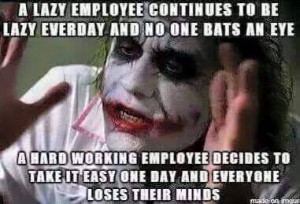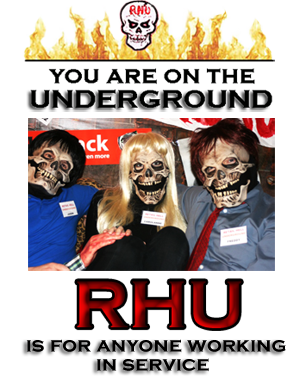Just Go! The 10 Essential Rules of Drive Thru Etiquette

Just Go! The 10 Essential Rules of Drive-Thru Etiquette
Hillary Clinton once wrote about it taking a village to raise a kid. Whether or not you’re a Clinton fan, it’s tough to fault her basic premise, that being that there are things outside of your control that will impact your child’s development.
And so it goes with so many things in life. No matter how carefully we prepare and execute, we are helplessly reliant on the actions of others for the activities we plan to proceed smoothly. Nowhere is this principal better realized than at a fast-food restaurant drive-thru.
According to one version of history, the first drive-thru lane of any stripe opened in 1930 at a bank in St. Louis. Rumor has it that the first time anyone yelled “Get a move on, will ya” from a running car was at that bank later the same day.
How many times have you pulled into a McDonald’s, looking for nothing more than a quick cup of coffee or large Diet Coke, only to have your schedule utterly decimated by the guy in front of you in the drive-thru queue holding a conversation with the cashier through a speaker phone.
Indeed, the drive-thru lane is a crap shoot, one which can pay off big in terms of time saved, or ruin your morning by trapping you in a hellish swirling vortex of exact-change seekers and menu-question askers. I humbly submit the following in hopes of improving drive-thru efficiency.
Attached please find the 10 Essential Rules of Drive-Thru Etiquette. Feel free to copy the rules and distribute them at your favorite drive-thru. And remember, you may be ready to zip through the drive-thru, but if the other villagers aren’t in a hurry, you’re probably screwed.
Pay Attention. Your text message is not more important than me getting my Diet Coke. Pull up and be alert about it. You can text your BFF about the rude idiot honking behind you in line later.
Know What You Want. Seriously, it’s McDonald’s (or Burger King, whatever) everything is a freaking muffin of some sort with eggs and/or sausage. If you’re looking for a little breakfast variety, you are in the wrong place. If you have any questions to ask about menu items, PARK AND GO INSIDE.
No Special Orders. If you are only substituting bacon for sausage, I guess that’s fine—though even that can slow things up. But, if you’re going off the menu with such cashier confounding requests as “folded not fried eggs” (I’ve actually heard this) or extra-crispy hash browns (I’ve heard this, too), PARK AND GO INSIDE.
No Bulk Orders. If your messed up, crossed-out, and heavily redacted fast-food shopping list includes stuff for more than 3 people, PARK AND GO INSIDE.
Order at one time. Dude, seriously, the cashier is listening. You do not need verbal confirmation for each and every item you are ordering. Additionally, you do not need to stop ordering to yell “hello” several times while placing your order. The odds are really good that the speaker is working. Perhaps you need visual confirmation that you are being listened to, in which case you should PARK AND GO INSIDE.
Your kids get one shot. I am talking to you, minivan lady. The drive-thru is no place for a Grand Caravan with more than one kid in it. And why are you always surprised that there are choices involved when ordering a Happy Meal? If your kid can’t make up his or her mind about apple slices or french fries, PARK AND GO INSIDE.

Be ready to pay. The order screen is there for a couple of reasons, one of which is to alert you as to how much you owe for the McWhatever. The time to begin scrounging for exact change is not when you reach the window.
Additionally, if you think there’s any chance your credit or debit card is going to be rejected…1., maybe you should be eating at home? or 2. PARK AND GO INSIDE.
No chatting up the help. She’s a cashier, not a bartender. I am truly sorry about the lack of warmth in your life, but chatting up the cashier at McDonald’s is not going to fill that gaping chasm in your soul. If you’re serious about trying to woo the young lady, you could try hanging around until her break, but that’s just as likely to earn you an audience with a free-coffee-wielding law keeper.
Do not change your order. Nothing messes up the system like drive-thru patrons that modify their orders at the pay window. Seriously, what was it about the last twenty feet you traveled that compelled you to swap your McGriddle for a McMuffin? Here’s a helpful hint for the wishy-washy: Order one of each, and warm up the one you don’t want now for breakfast tomorrow.
You got your stuff, just go! Why did you just put your car in park? How long do you think this is going to take? Per Dante, there is now a level of hell for the people who actually unwrap each sandwich and inspect it while still at the pick-up window. And that level-of hell is especially brutal for the folks that then pass the bag they just received back into the store. Really, your ridiculously customized special order isn’t just right? Maybe next time you should PARK AND GO INSIDE.
Sourced from blog.consumerguide.com



























Recent Comments